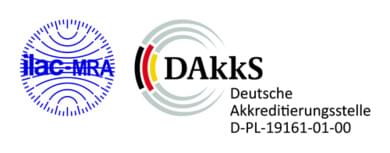Follow up to DCONex, topic: Asbestos in fillers and plasters
Dr. Gunnar Ries reports on lectures concerning the topic of asbestos in filler and plasters at the DCONex fair in Essen, January 13th-15th
Even over 20 years after its ban, asbestos still plays an important role in reconstruction works concerning hazardous substances in buildings. Some facts and figures support this statement. 5.7 million tons of asbestos have been imported to Germany (Federal Republic and German Democratic Republic). 75% of it was used for the production of asbestos cement- the main product. Its asbestos content of approx. 10 % altogether suggests an asbestos cement production of 45 million tons. After over 20 years after its ban only about 4 million tons have been disposed of which means that approx. 39 million tons can still be found within the buildings. And not every asbestos product can be identified as easily as asbestos cement.
Concealed products like plasters, fillers and tile adhesives
Recently, concealed products plasters, fillers and tile adhesives have been shifted into the focus of attention. Very often small amounts of asbestos were added in order to improve their processing properties. Therefore, today these asbestos-containing areas are hidden behind wallpapers or only traces can be found like for example in the case of sealed cable slots. These concealed products pose a serious impact on health to everyone who accidentally works on them with hand or machine tools or in case of improper processing as it may lead to an enormous release of fibres. In particular those houses are under suspicion that were built, modernized or rehabilitated even after the introduction of the absolute ban on asbestos in 1993, but at least to the year 1995.
High requirements on sampling
This problem poses high demands on sampling to ensure that any possibly existing hazardous substances can be captured reliably. In order not to increase the number of samples to be taken too much a composite sample consisting of several individual samples was suggested in a discussion paper published by the “Gesamtverband der Schadstoffsanierer (GVSS) together with VDI in June, 2015. From this point of view particular attention should therefore be paid to hidden, asbestos-containing products.
Special demands on the laboratory analysis
This procedure is quite a challenge for the analytical procedures as the detection limits had to be lowered considerably compared to the conventional procedure according to VDI 3866, page 5, i.e. down towards the detection limit of BIA procedure 7487 (0.008 mass%) or even lower. First of all, because the materials to be analysed only contain very low contents of asbestos and secondly, because often only one single sample taken from the respective composite sample made of all relevant samples contains asbestos. In very many cases the asbestos-containing product is only partly captured during sampling. Therefore the discussion paper on VDI 6202, page 3 will be extended.
Costs of testing
In contrast to the examination of an ordinary material or dust sample a greater amount of time and effort must be considered when preparing and examining filler and plasters.
- Preparation of a composite sample, homogenisation, grinding
- Ashing, acid treatment
- Preparation and filtration of a suspension through sample collection filter sputtered with gold
- Time consuming examination of the specimen in order to detect the lowest concentrations of asbestos including its quantification.
► Price list SEM / asbestos analysis
Outlook and further considerations
The standard analysis procedure according to VDI 3866, page 5 is currently being revised and and the new version is said to include options to significantly lower the detection limit of 1 mass% to a great extent, once the definitive text will be published in 2016. Detection limits of down to 0.001 mass% are under discussion.
This procedure is intended to ensure that even contaminated materials with a hidden or low content of asbestos can be identified reliably. After all, in case of improper handling these materials might release fibre amounts that are within the national limits of tolerated risks of fibres of 100 000/m3. This value means that there is an additional cancer risk in case of an occupational exposure of over 40 years, i.e. 4 out of 1000 persons get cancer. The so-called acceptable risks states that if you comply with an acceptable tolerance of 10 000 fibres/m3 no additional measures will be necessary. The plan is to lower the acceptable tolerance down to 1000 fibres until the year 2018.


